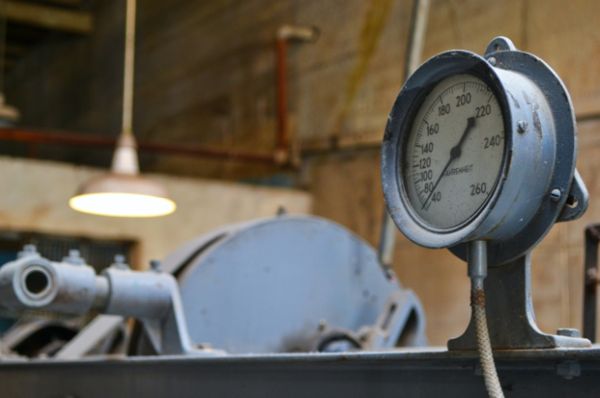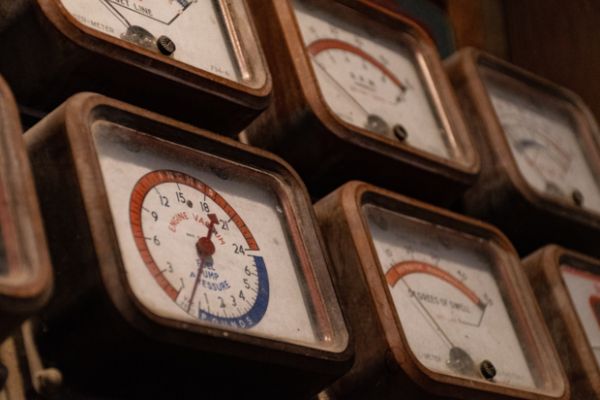2 Types and Applications For a Vacuum Gauge

A vacuum gauge is a device for determining pressure at low pressures.
It can measure from a few microns to one atmosphere.
In order to determine how sensitive a vacuum gauge is, the instrument is calibrated against a pressure standard.
Several types of vacuum gauges are available, each with its own set of applications.
1. Thermocouple gauges measure changes in thermal conductivity
A thermocouple gauge is a device used in various applications that depend on changes in thermal conductivity to measure temperature. Click here for more information.
It has two parts: the head and the envelope, which are made of a thermally conductive material. Both components change temperature and thermal conductivity with changes in pressure. A thermocouple gauge is a useful tool for determining the temperature of different materials in a given environment.
Thermocouple gauges measure thermal conductivity at high and low pressures. Their upper-pressure range is about one torr. At higher pressures, thermal conductivity changes very slowly because a hot gas sheath forms around the wire. This causes the response time of a thermocouple gauge to be slow, and therefore it should be used with caution.
A thermocouple gauge should be calibrated every few months to maintain accuracy. It should be installed by a qualified professional. A new gauge should cost approximately half as much as a refurbished one. To use one, check the SDS of the solvent before using it.
There are two types of thermocouple gauges: Bayard-Alpert ion gauges and Schulz-Phelps gauges. Both are based on the principle that the emission of electrons from a heated filament produces an ionization current. This current is directly proportional to the number density of the gas and the pressure.
Thermocouple gauges are used to measure changes in temperature. The thermocouple gauge uses a tungsten wire with a heating filament. The heating filament can reach temperatures ranging from 50 degrees Celsius to four hundred degrees Celsius.
Pirani gauges are similar to thermocouple gauges but have a lower resolution than thermocouple gauges. Besides using a thermocouple, a thermistor gauge can be made at home using glow-plugs or model aircraft glow-plugs.
A thermocouple gauge is used in various industrial applications. One of the most common applications is in vacuum systems. This type of gauge measures the temperature change in a metal strip. It is commonly used in high vacuum systems and single pump systems.
 2. Cold cathode gauges have a permanent magnet
2. Cold cathode gauges have a permanent magnet
Cold cathode vacuum gauges use a permanent magnet instead of a filament to produce electrons. This creates a self-sustaining discharge that causes electrons to travel long distances in spiral paths. Click the link: https://www.sciencedirect.com/topics/engineering/cold-cathode for more information.
This improves sensitivity and ionization probability. The discharge begins when one electron gains enough energy to ionize a gas molecule. The permanent magnet also reduces the effect of electromagnetic radiation on the system and can be switched on and off at high pressures.
The magnet is located within a chamber containing the cathodes. The cathodes are separated from the magnet by a small gap. This means that if there is any magnetic flux outside the meter, it will short-circuit the electrometer. This ensures that the sensitivity of a cold cathode vacuum meter is high.
In addition to a permanent magnet, cold cathode vacuum meters have ionization capabilities. The process of ionization allows for precise measurement. Usually, the ion current is very accurate, and it can be read over many decades of pressure. Cold cathode vacuum meters are not bakeable and are available in materials suitable for corrosive environments.
The Penning and Bayard-Alpert meters have lower sensitivity, but they are less susceptible to contamination and particulates. The Bayard-Alpert meters, on the other hand, have a hot filament and can be damaged by external magnetic fields. However, all three types of meters are sensitive to pressures as low as ten mbar.
Unlike their anode-based counterparts, cold cathode vacuum meters also contain a permanent magnet. The permanent magnet is typically toroidal in shape and positioned outside of the ionization meter housing.
Because the permanent magnet is outside the meter’s housing, it must be able to provide a field volume larger than the gauge itself. Click the link: https://www.teledyne-hi.com/vacuum-gauge to learn more.
The magnet must also be large enough to provide a large enough magnetic field to keep electrons in the desired path. This can seriously affect the performance of sensitive instruments packed close to the gauge.
The anode is comprised of a hollow cylindrical ring, which is coaxially supported by a permanent magnet. The anode and the cathodes are separated by slot 22. A conductive rod 25 extends through the slot to reduce the required magnetic flux and confines it closer to the useful portion of the instrument.
The anode and the cathode are supported in order to minimize acceleration and vibration.






